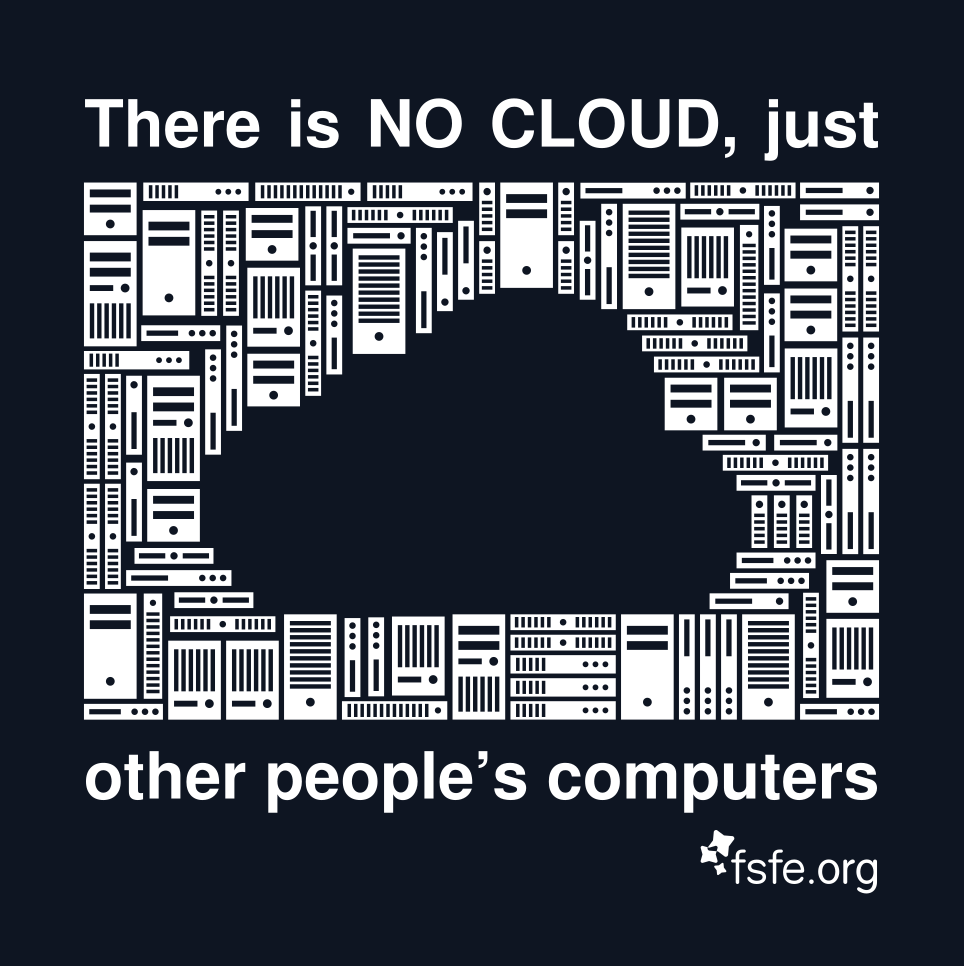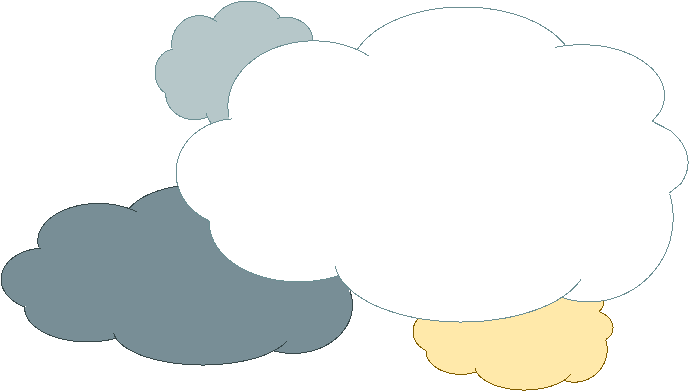Shine some light through this cloud
a short primer on clouds and cloud computing
Feminist Linux Meetup, Vienna 19 April 2024

jackie / Andrea Ida Malkah Klaura <jackie@tantemalkah.at>
https://tantemalkah.at/2024/cloud-talk
 All contents, unless otherwise noted, were produced by Andrea Ida Malkah Klaura
All contents, unless otherwise noted, were produced by Andrea Ida Malkah Klauraunder a Creative Commons Attribution - Share Alike 4.0 International License.
whoami
- Andrea Ida Malkah Klaura (if you need a legal name)
- jackie (in almost all other cases)
- Pronouns:
- she/her in binary gender space
- ze/hir in the wider multiverse
- Working mostly as open source engineer @ dieAngewandte
- focus: backend with Python/Django and DevOps-y stuff
- Also trying to clone myself to do:
- teaching web-based game prototyping and machine learning @ dieAngewandte
- and feminist technoscience (studies) @ TU Wien
- some side web projects for NGOs (mostly WordPress based)
- organising feminist linux meetups and other community stuff
- More details on tantemalkah.at

Source: fsfe.org, Markus Meier, CC-BY-SA 4.0
Contents
- a very short history of cloud computing
- the basics of virtualisation and containers
- types of clouds
- do clouds cool the climate?
- discussion & workshop teaser
- [optional] live "cloud" examples

how much does it rain on you?
sli.do : #528793
a very short history of cloud computing
☁🖧📜
cloud computing
"the on-demand availability of computer system resources, especially data storage (cloud storage) and computing power, without direct active management by the user."
☁🖧📜
- 1960ies: time sharing became popular
- 1970ies: the cloud as a network symbol
- 1990ies: cloud as a metaphor for virtualised services
- 2002: AWS created as Amazon subsidiary (S3 & EC2 in 2006)
- 2008: NASA's Nebula; Google App Engine
- 2010: Rackspace & NASA team up on OpenStack; Microsoft Azure
- 2012/13: Google Compute Engine
- 2014: Cloud Computing foaled as a son of Distorted Humor.
virtualisation and containers
(hardware) virtualisation
creating a virtual machine (with virtual hardware) in which an OS can be run as if it would be installed on its own computer
the virtualisation host contains some form of virtualisation software (ideally hardware-assisted) that allows us to create virtual machines on which guest operating systems can be run
containerisation
creating multiple isolated process environments that can run on the same operating system
a specific approach to OS-level virtualisation
Source: kubernetes.io, CC-BY 4.0
types of clouds
Source: Wikimedia Commons, Sam Johnston, CC-BY-SA 3.0
Source: Wikimedia Commons, Bikeborg / Wylve, CC0 / Public domain
Source: Wikimedia Commons, Sam Johnston, CC-BY-SA 3.0
do clouds cool the climate?
clouds for a greener IT?
-
The New York Times: Cloud Computing Is Not the Energy Hog That Had Been Feared (Feb. 2020)
- "computing output jumped sixfold from 2010 to 2018, their energy consumption rose only 6 percent"
-
EY: How digitalization acts as a driver of decarbonization(Oct. 2020)
- 4% of global greenhouse gas emissions accounted for by digitalization
- rebound effects cancel out ~10% to 30% of savings from energy-efficient tech
-
JAXenter: The cloud and good climate – How cloud computing can help protect our climate (Aug. 2019)
- Gains in operational, hardware, and infrastructure efficiency & exploiting renewable energies. But there is also a responsibilty of dev teams
-
Greenpeace: Oil in the Cloud (May 2020)
- on how 3 big cloud providers are implicated in the exploitation of the planet for even more oil, countering their green cloud efforts
the cloud is
"a hyperscale, automated computer farm run by someone who's better at automation and security than you, and can buy electricity and servers and network connectivity more cheaply than you because they buy so much of it and if you want all the benefits of cloud you have to design things to achieve that"
Mary Branscombe (2016): ZDnet: Stop saying the cloud is just someone else's computer - because it's not
Hopefully I raised some questions
hopefully I am able to answer some as well
Contact me: https://tantemalkah.at/#contact
Slide deck: https://tantemalkah.at/2024/cloud-talk